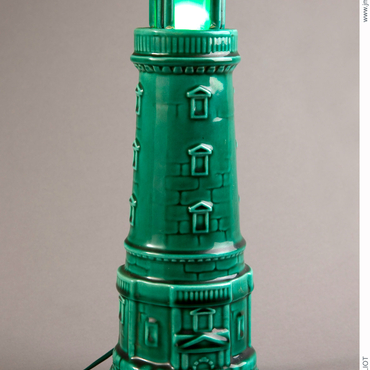
- Home
- King of Lighthouses
- A lighthouse « culture »
- Cordouan souvenirs
It was not until 2001, with the exhibit Souvenirs de rivages¬ – which was launched at the musée de Dunkerque, and finished up at the musée de la Marine – that seaside souvenirs were finally accorded the status of "minor art." In the past these objects were considered keepsakes, but they were never understood as a source of popular memory. Their value was sentimental, overlooking the manner of their semi-industrial production. What are these charming, old-fashioned objects? On the whole, they were inspired by the life of the seaside with a predilection for the northern and Atlantic coasts. Naturally, with its special allure, the Cordouan lighthouse did not escape this vogue for seaside souvenirs, produced in a variety of shapes and materials. It is not by chance that the many depictions of the "King of Lighthouses" show it at low tide. This is the time of day when the peyrat is visible, and tourists can reach it by launches from Royan. While souvenir manufacturers readily reproduced its image on porcelain, ashtrays, soap dishes, and nightlights, in the late nineteenth century, the famous pottery manufacturer Creil & Montereau issued an imposing plate with an image of Cordouan. There are also numerous, often anonymous, paintings depicting the beacon at low tide.


